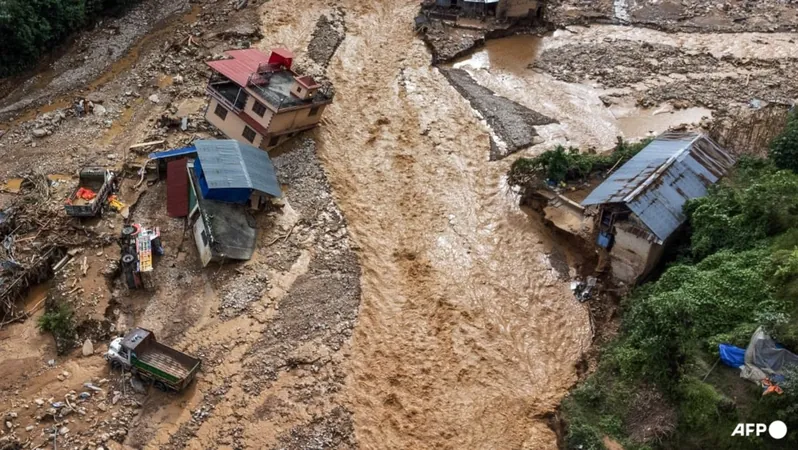
Outrage Grows in Nepal as Floods Claim 218 Lives During Monsoon Disaster
2024-10-01
KAVRE, Nepal: As the monsoon floods that swept through Nepal wreaked havoc this past weekend, survivors have expressed their outrage over the government's insufficient relief efforts.
With at least 218 lives lost and 27 individuals still missing, the aftermath of this disaster has left entire communities grappling with devastation and despair.
Floods and landslides are unfortunately common during South Asia's monsoon season, which lasts from June to September.
However, experts warn that climate change is exacerbating the severity and frequency of these events.
This year's monsoon presented unprecedented challenges, as a staggering 240mm of rain fell in a mere 24-hour period—marking the heaviest rainfall in more than two decades.
Neighborhoods in Kathmandu were severely affected, with many of the poorest residents living in makeshift slums near the Bagmati River being particularly hard hit.
Mira KC, a local villager from Kavre, conveyed her frustration: "There is no road, so no one has come. Even if help arrives, it's too late for those who have already died."
Man Kumar Rana Magar, 49, echoed these sentiments.
Although temporary shelter was provided to his community in a school, the sudden reopening of the institution forced them to leave before they were truly ready to return to their ravaged homes.
"We are so close to the seat of the government. If they cannot take care of the poor this close, what will they do about others?" he lamented.
The government has faced criticism for not heeding warnings about the impending storms.
Climate expert Arun Bhakta Shrestha accused officials of ignoring necessary precautions, a sentiment shared by disaster management specialist Man Bahadur Thapa.
He emphasized that better coordination and resource allocation could have saved more lives.
"We could have saved a lot more lives if we prepared and built the capacity of our responders," Thapa asserted.
In response to the growing criticism, home ministry spokesman Rishi Ram Tiwari stated that authorities had been tirelessly engaged in rescue and relief efforts since the disaster struck, assuring citizens that every available resource is being utilized.
This tragic incident adds to the alarming statistics of 2023, where more than 300 individuals have died in Nepal due to rain-related disasters.
With the increasing unpredictability of monsoon seasons, calls for improved disaster management and climate resilience strategies have never been more pressing.
As Nepal continues to grapple with the aftermath of this disaster, the need for effective government response and community support has never been clearer.
Will the authorities learn from this catastrophe, or will they wait for the next inevitable flood to take action? Only time will tell.


 Brasil (PT)
Brasil (PT)
 Canada (EN)
Canada (EN)
 Chile (ES)
Chile (ES)
 España (ES)
España (ES)
 France (FR)
France (FR)
 Hong Kong (EN)
Hong Kong (EN)
 Italia (IT)
Italia (IT)
 日本 (JA)
日本 (JA)
 Magyarország (HU)
Magyarország (HU)
 Norge (NO)
Norge (NO)
 Polska (PL)
Polska (PL)
 Schweiz (DE)
Schweiz (DE)
 Singapore (EN)
Singapore (EN)
 Sverige (SV)
Sverige (SV)
 Suomi (FI)
Suomi (FI)
 Türkiye (TR)
Türkiye (TR)